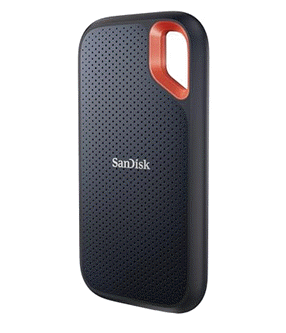Divya
2025-09-04 01:09:00
gbhackers.com
Cybersecurity researchers have identified a sophisticated evolution in XWorm malware operations, with the backdoor campaign implementing advanced tactics to evade detection systems.
The Trellix Advanced Research Center has documented this significant shift in the malware’s deployment strategy, revealing a deliberate move toward more deceptive and intricate infection methods designed to increase success rates while remaining undetected.
XWorm has traditionally relied on predictable distribution mechanisms, but recent campaigns demonstrate a strategic transformation.
The malware now employs legitimate-looking executable filenames to disguise itself as harmless applications, exploiting both user and system trust.
This approach combines social engineering with technical attack vectors, moving beyond conventional email-based attacks while still utilizing .lnk files and phishing emails as initial access points.
Multi-Stage Infection Process
The infection begins with a stealthy .lnk file distributed through phishing campaigns. When executed, this shortcut triggers malicious PowerShell commands that initiate a complex chain reaction.
The process drops a text file containing the message “domethelegandary-ontop hackingtest f**ked” into the system’s temporary directory before downloading a deceptive executable named ‘discord.exe’ from a remote server.

The downloaded ‘discord.exe’ file serves as the second stage, utilizing sophisticated .NET packing techniques and masquerading with a legitimate Discord application icon.
Upon execution, it drops two additional malicious files: ‘main.exe’ and ‘system32.exe’. The latter represents the actual XWorm payload, deliberately named to imitate a vital Windows system file for camouflage purposes.
The ‘main.exe’ component focuses on system compromise by disabling Windows Firewall through registry modifications and checking for third-party security applications.

It creates a registry entry at “HKEY_LOCAL_MACHINE\SOFTWARE\Policies\Microsoft\WindowsFirewall\DisableFirewall” to ensure persistent firewall disablement across system reboots.
Meanwhile, ‘system32.exe’ implements advanced evasion techniques, including virtual environment detection to avoid security sandbox analysis.
If virtualization is detected, the malware terminates itself using a failfast mechanism. In legitimate environments, it creates a duplicate named “Xclient.exe” and establishes multiple persistence mechanisms.
XWorm demonstrates sophisticated anti-analysis capabilities through several methods. It uses PowerShell commands with ExecutionPolicy Bypass to add itself to Windows Defender exclusion lists, circumventing real-time monitoring.
The malware creates a scheduled task called “XClient” that runs every minute, ensuring continuous operation even after system reboots or termination attempts.
The malware employs advanced cryptography, utilizing the Rijndael cipher combined with Base64 encoding for data concealment.

This two-stage decoding process protects critical operational data, including Command and Control server information, IP addresses, domain names, and port numbers essential for attacker communication.
Once established, XWorm provides extensive backdoor capabilities through its C2 server communication.
Attackers can execute various remote commands including system shutdowns, file downloads, URL redirections, and DDoS attacks. This transforms compromised machines into botnet nodes, expanding the threat actor’s operational capabilities.
The malware creates a mutex named “1JJyHGXN8Jb9yEZG” to prevent multiple instances and systematically gathers system reconnaissance data including computer names, manufacturers, and model information.

This intelligence helps attackers understand their targets and customize subsequent attack phases.
The evolution of XWorm represents a significant advancement in malware sophistication, highlighting the critical need for multi-layered security approaches.
Organizations must implement robust detection mechanisms, user awareness training, and comprehensive endpoint protection to defend against these increasingly deceptive attack vectors that continue to challenge traditional security measures.
Find this Story Interesting! Follow us on LinkedIn and X to Get More Instant Updates.
Keep your files stored safely and securely with the SanDisk 2TB Extreme Portable SSD. With over 69,505 ratings and an impressive 4.6 out of 5 stars, this product has been purchased over 8K+ times in the past month. At only $129.99, this Amazon’s Choice product is a must-have for secure file storage.
Help keep private content private with the included password protection featuring 256-bit AES hardware encryption. Order now for just $129.99 on Amazon!
Help Power Techcratic’s Future – Scan To Support
If Techcratic’s content and insights have helped you, consider giving back by supporting the platform with crypto. Every contribution makes a difference, whether it’s for high-quality content, server maintenance, or future updates. Techcratic is constantly evolving, and your support helps drive that progress.
As a solo operator who wears all the hats, creating content, managing the tech, and running the site, your support allows me to stay focused on delivering valuable resources. Your support keeps everything running smoothly and enables me to continue creating the content you love. I’m deeply grateful for your support, it truly means the world to me! Thank you!
|
BITCOIN
bc1qlszw7elx2qahjwvaryh0tkgg8y68enw30gpvge Scan the QR code with your crypto wallet app |
|
DOGECOIN
D64GwvvYQxFXYyan3oQCrmWfidf6T3JpBA Scan the QR code with your crypto wallet app |
|
ETHEREUM
0xe9BC980DF3d985730dA827996B43E4A62CCBAA7a Scan the QR code with your crypto wallet app |
Please read the Privacy and Security Disclaimer on how Techcratic handles your support.
Disclaimer: As an Amazon Associate, Techcratic may earn from qualifying purchases.









































































































